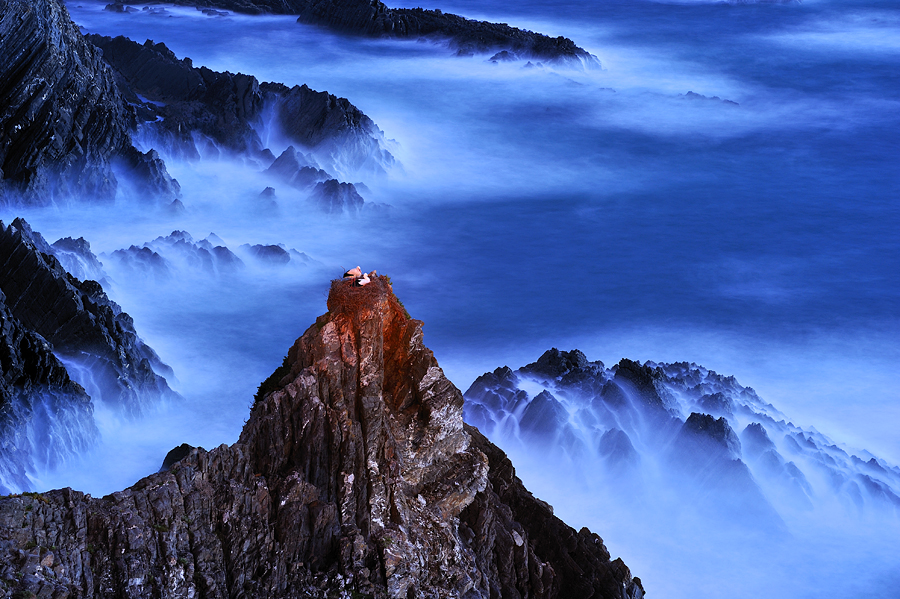I am in the Natural Park of Southwest Alentejo and Costa Vicentina in Portugal, which is perhaps the only colony of storks in sea cliff on the planet. Here the waves of the Atlantic Ocean struck with fury and the wind blows almost daily violence.
For this fully nocturnal image I used the moonlight and warm artificial lighting that will highlight an important the main plane. My intention was to get a picture with depth and relief in which be merged harmoniously photographic art and nature.
I chose taking into account the high tide, one night with a ceiling that is cloudless, intending to get a deep blue sea. I opted for a crescent moon and waited for this were declining near the horizon in order to prevent shadows in crevices and caves of the cliff, also for a more polarized and less harsh than the moon light high in the sky.
To achieve more vivid colors I chose a cold white balance and adjusted the Picture Control my camera in the landscape option. These settings provide me a lot like a pure and result Velvia film. I made some photos of checking framing, depth of field and effect of water movement and levels in-camera editing these from the ISO. Finally and all under my control I launched at the end of the show a flash of red light on the top of the rock and the nest, thus get a combination of stunning red colors on deep blue, plus volume. At the same time I chose a short optical to include the entire landscape with red highlighting the unbeliever of where a pair of white storks have built their nest. This part was the hardest because during the long exposure animals can not move the least and this was almost impossible because of the wind itself to the beat. The vast majority of images were trepidaras by strong wind, many other storks moved, the rest, sometimes passed me with red light and many fell short me. Just finally this picture was saved from the trash.
professional category

The ladies of the sea (Single)
DESCRIPTION
AUTHOR
El fotógrafo más premiado de España en competiciones internacionales. Francisco Mingorance se dedico a la fotografía de naturaleza de forma profesional hace tres décadas. Durante más de veinte cinco años ha ejercido de reportero gráfico para la gran mayoría de revistas, periódicos y ediciones más importantes del mundo, así mismo a publicado más de un centenar de artículos sobre la naturaleza española en medios especializados como National Geographic, International Widelife, Terre Sauvage, BBC, Geo y un largo etcétera. Muchos de estos trabajos han sido reconocidos con diferentes galardones no solo en España sino en el resto del mundo, solo en los últimos cinco años Francisco Mingorance ha obtenido más de 200 premios internacionales. Así mismo sus fotos han servido para ilustrar las páginas de más de una veintena de libros y fuente de aprendizaje he inspiración para muchas generaciones de fotógrafos de naturaleza. Francisco acaba de publicar en National Geographic su ultima historia sobre los macacos de Berbería.
back to gallery


